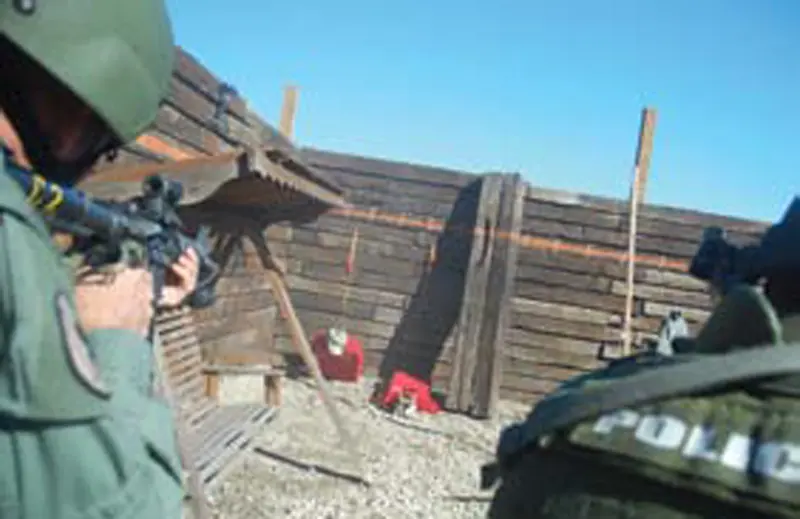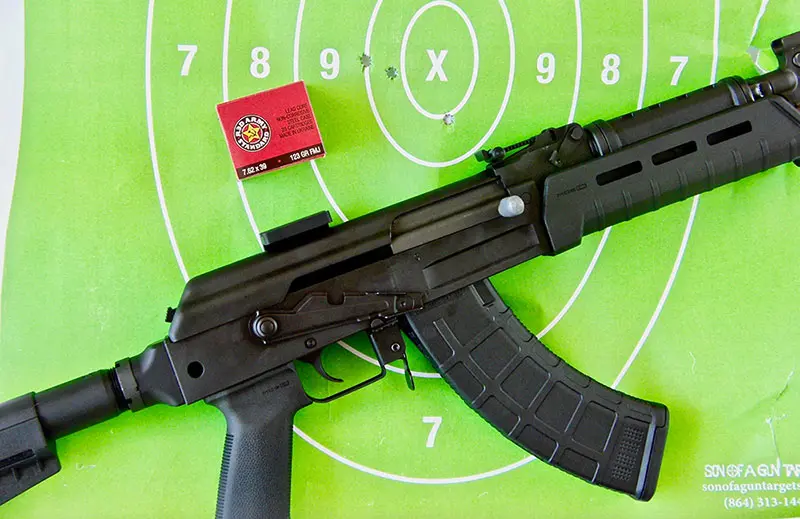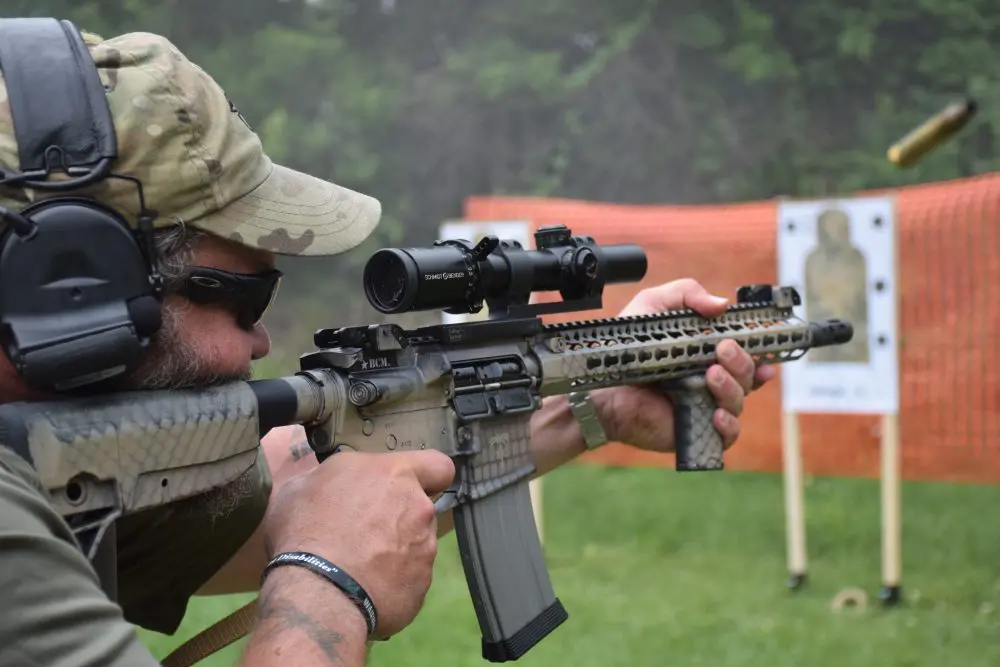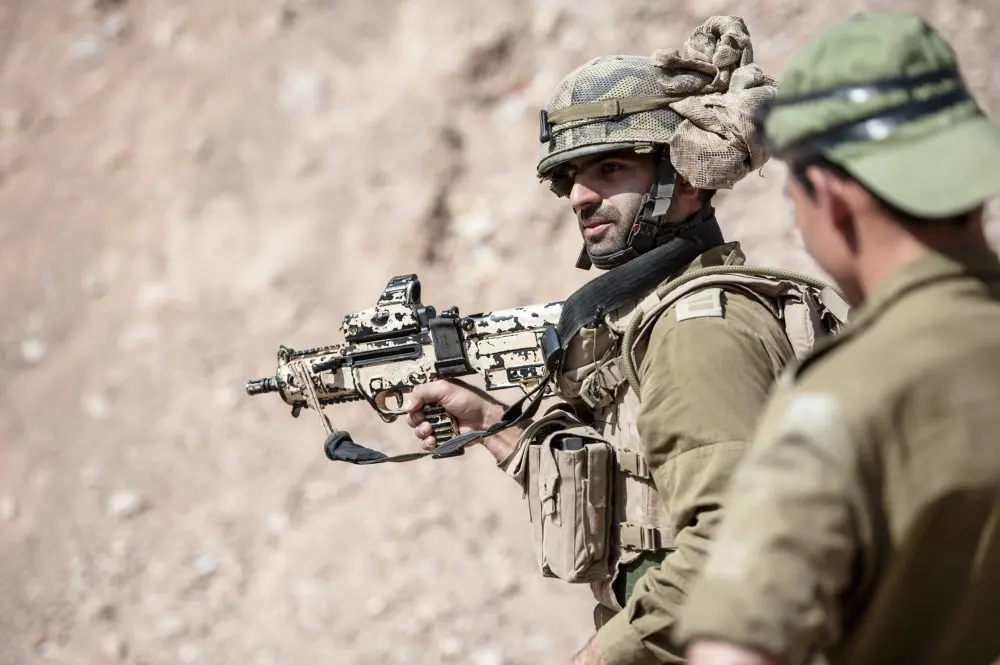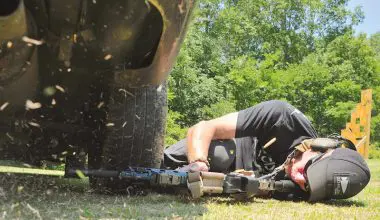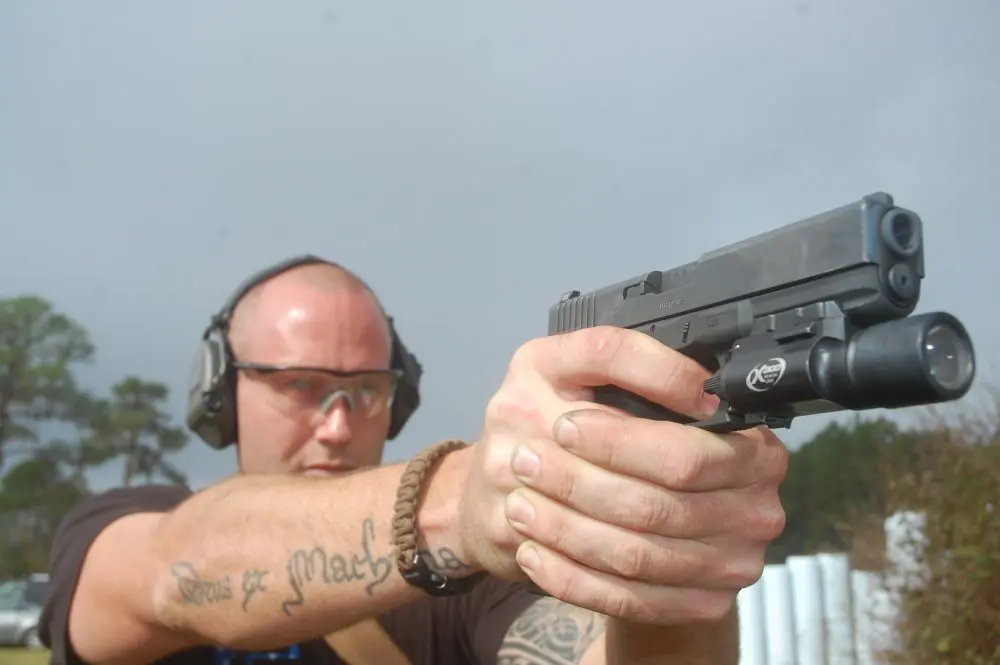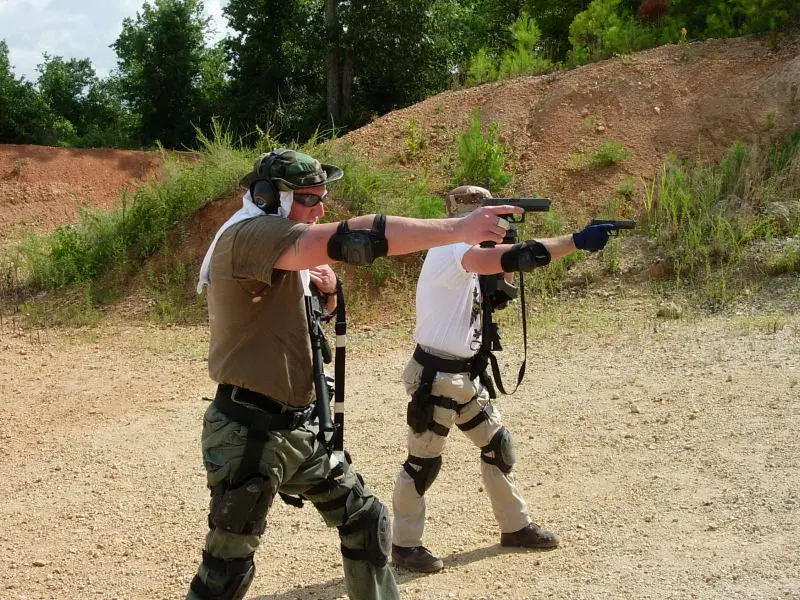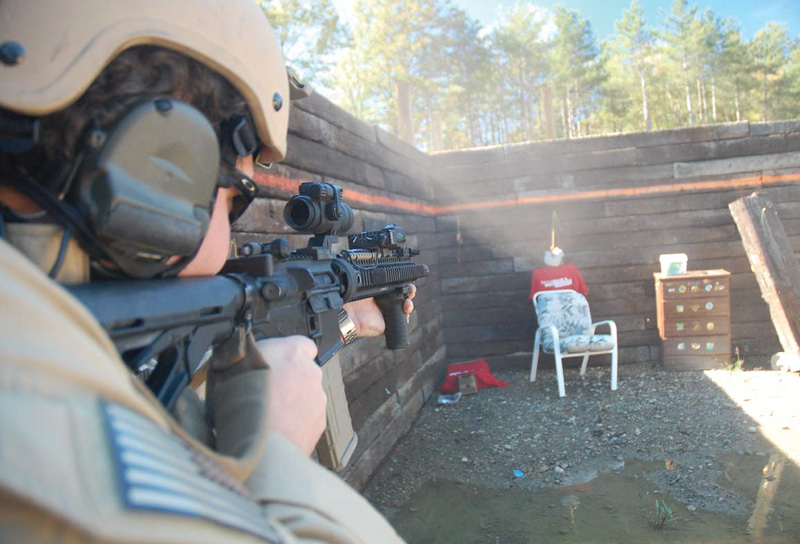
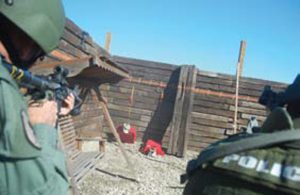
This kind of myopia exists throughout the military and police communities, where those who confuse theory with reality consider qualification to be the equivalent of gunfighting. It isn’t. Not even close.
Table of Contents
SQUARE-RANGE TRAINING
Square-range training is very useful for teaching the basics, and the basics are what permit us to win in a gunfight. These basics include weapons manipulation, reloading and marksmanship.
They may also include static and dynamic turns, movement, positions and low-light drills. Square-range work is all most shooters—regardless of MOS, job title, rate or vocation—will ever see.
There are a lot of reasons for this, and money—or the lack of it—is at the top of the list. But there are other issues, to include careerist administrators/seniors, unimaginative training staff and preoccupation with the qualification course.
The square range can take things only so far. What you learn there is the foundation for all that follows, and are building blocks for what lies ahead. To take the journey into a more useful realm, two more steps are necessary.
FORCE-ON-FORCE TRAINING
The first of these is force-on-force training. Using live opponents and non-lethal projectiles (at one end of the spectrum Airsoft, and at the other end purposemade ammunition such as Simunition®) can be extremely useful. However, the scenarios must be carefully scripted or the result will be little more than a game.
Lack of noise is also a problem. Real gunshots raise the blood pressure and increase anxiety. The lack of noise reduces the usefulness of force on force.
MILES or other types of blank firing training can be useful, but after having people twice shoot the BFAs off their carbines at me when the safety checks were improperly conducted and ball ammo was in the magazines instead of blank ammo, I am not a fan.
THE SHOOT HOUSE
The other additional step in the learning process is the shoot house. The house can be live-fire or not, depending on the level of training and the quality of the shooters, and more importantly, the mission requirements. The shoot house can also be used in force-on-force training, making it a versatile training experience.
There are relatively few shoot houses in this country, and almost all are within the purview of the military or police. Some agency shoot houses permit civilians to train if certain requirements are met. Understand that this is not a place for dabblers (amateurs who engage in an activity without serious intentions and who pretend to have knowledge) nor for those who do not have the proper mindset.
The live-fire shoot house may or may not have ballistic interior walls. Generally, the exterior walls will be ballistic, and the perimeter may be bermed as well.
SMALL OR LARGE?
Shoot houses may be small or large, and the competing forces of money and capability are at work here.
A small house is often defended as being less expensive and more realistic because it mimics an actual house. However, that small house comes with multiple problems.
The first issue is that not all incidents take place in a small house. Factories, offices, schools and hospitals have all been targets in the past, and will no doubt be in the future.
Another negative is that a small house offers little in the way of surprises. The shooters become familiar with the small house, and instead of seeing a tactical problem, they—due to over-familiarity— turn it into a game.
You cannot make a small house larger, no matter what you do.
A large house will also have large rooms that you can temporarily subdivide into smaller rooms. Additionally, you can have long hallways with “L”, “T” or four-way intersections—something not seen in a small residence, but often seen in commercial occupancies.
The large house is significantly more capable.
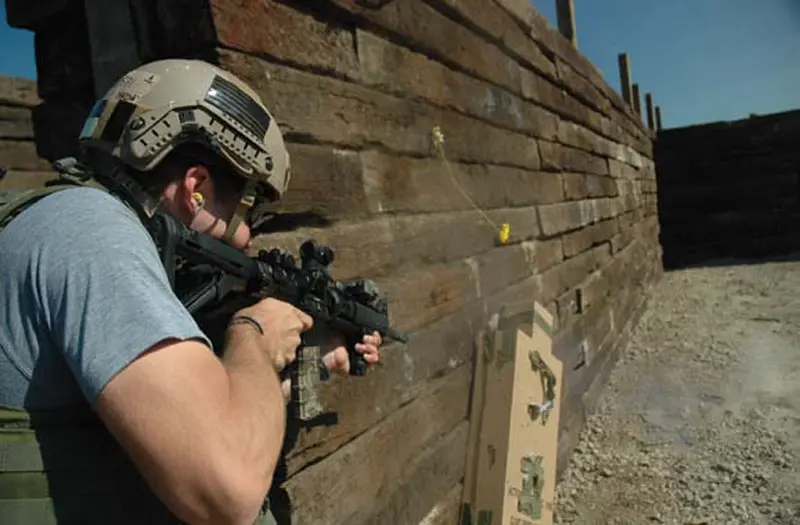
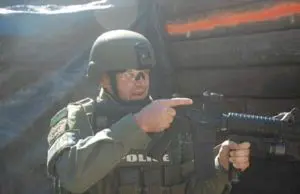
ATTITUDE ADJUSTMENT
The shoot house requires that all hands have a paradigm shift in attitude. The reasons should be apparent but for some reason, it fails to enter into the decisionmaking process of many.
Experienced shooters whose prior training was exclusively on a square range will often have a very difficult time in a shoot house. The reason for this is simple—they are out of their comfort zone. Wikipedia describes the comfort zone as this:
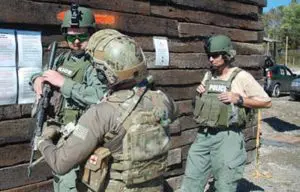
“The comfort zone is a behavioral state within which a person operates in an anxiety-neutral condition, using a limited set of behaviors to deliver a steady level of performance, usually without a sense of risk…. A person’s personality can be described by his or her comfort zones. Highly successful persons may routinely step outside their comfort zones, to accomplish what they wish. A comfort zone is a type of mental conditioning that causes a person to create and operate mental boundaries. Such boundaries create an unfounded sense of security. Like inertia, a person who has established a comfort zone in a particular axis of his or her life will tend to stay within that zone without stepping outside of it. To step outside a person’s comfort zone, they must experiment with new and different behaviors, and then experience the new and different responses that then occur within their environment.”
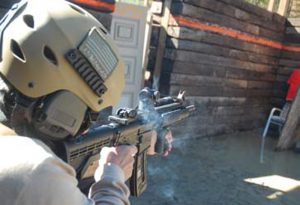
Let’s translate this to training.
Our shooter has attended several department/ agency firearms classes and has qualified once or twice a year. He may have also taken an outside course. He feels good about himself and is competent in his gun handling and sufficiently accurate in his marksmanship.
Here’s the rub: He stands on a line with other shooters and engages a paper target that is on a line with other paper targets. There is little or no target discrimination. On command you are normally told to shoot a particular drill, with a preset number of shots.
You are told when to shoot. You may shoot on the move, while on line. You may execute static and dynamic turns, while on line.
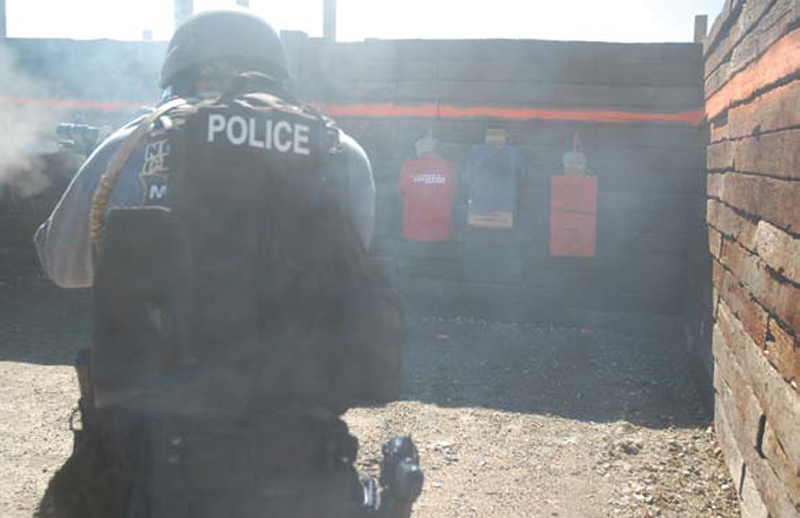
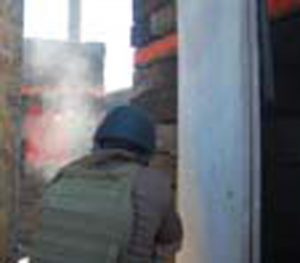
The shoot house is a very different animal. While a good instructor will have a crawl, walk, run Program of Instruction, some things are constant.
You will have someone in the house with you. This may be another student or an instructor. Understanding this simple fact is a major change. On the square range, it’s all about you. But when there are others present, it’s now about us—as in all of us. If you fail to recognize this, and many do, you are headed down that slippery slope to disaster.
This starts you on your journey of entering a place that is far from your comfort zone.
You may have targets across the entire room, as well as hallways and adjacent rooms. You have to extend your situational awareness far beyond where it normally goes.
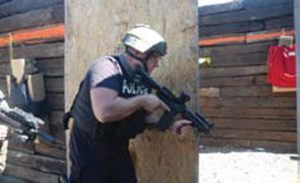
These targets may be 270 degrees or greater and not always in front of you— more situational awareness issues. Your head must be on a constant swivel, and you have to process information at a faster rate than normal.
The targets require not only acquisition, but also identification. Target discrimination is a big thing. You actually have to see what you are seeing.
Targets may be graphic or more realistic. They may be dressed in clothes.
And they may well be reactive.
And this causes an enormous problem for a lot of people. They are used to shooting, not fighting. When I’m training students in a shoot house scenario, I brief that the targets will be identified in a particular way, and that the threat must be shot to the ground.
But many fail to do this. They snap off a few quick shots and then jerk the carbine down (the equivalent of speed holstering) and turn away, forgetting the followthrough and assessing steps.
The excuses become pitiful. Some emphasize that “I shot him twice” when in fact all they may have done is shoot at him twice.
Close-range marksmanship may deteriorate as shooters forget about mechanical offset, placing shots lower than they are aiming.
Students may vapor lock, becoming overloaded with information and unable to process it. This exists on many levels and is never pretty.
GEAR AND AMMO FACTORS
Gear issues also come into play. At EAG Tactical, we require shoot-house students to wear helmets and armor for a number of reasons, but the primary reason is safety. For those who do not wear armor as a job description, there may be a steep learning curve, as they have to re-learn how to shoulder and shoot a carbine.
Ammunition issues abound as squarerange shooters—used to two-shot drills— find that they work about as well in the shoot house as they do in real life. They also find that poor close-range accuracy may result in their running low on ammo. Having unexpected targets with critical high-percentage shots adds to ammo expenditure, and makes those who poohpooh tac reloads wish they had retained those partially empty magazines.
The following is an excerpt from a handout we provide to our students in our Shoot House Course.
COMMON STUDENT MISTAKES
New students become overloaded with information in the house. As a result, they attempt to do everything and often do little right.
- They scan without seeing what is obvious.
- Verbiage may be incoherent/ scattered.
- Muzzle awareness and trigger-finger issues may increase.
- Some may forget simple instructions.
- Most move too fast.
- If reactive targets are used, some may not shoot the target to the ground, but instead shoot standard drills and turn away.
SAFETY ISSUES
- Incidents/mistakes that occur on a square range are magnified inside the house.
- Mechanical safety is ON except while shooting.
- Muzzle! Be extremely careful where that muzzle is pointing.
- Be sure of your target! Consider the bckground!
- SLOW DOWN. Stay in control.
- DO NOT make fast, jerky movements. Move smoothly.
- Prioritize threats.
- Use proper verbiage before shooting into another room/hallway sector (“SHOT”—“Shoot”).
GENERAL GUIDELINES
- Remember that this is training for the fight. You must survive training before you can win the fight.
- Remember that others are in the house with you.
- Support your partner.
- Slow down. Make positive ID before you shoot.
- Scan for danger areas.
- Prioritize your work.
- If you find yourself with nothing to do, do (expletive deleted) something!
- Breathe….
Training to win the fight is multifaceted and requires good initial training followed by realistic sustainment training.
The shoot house is not a place for duffers or dabblers. The shoot house can be a very dangerous place for those whose skill sets are not well grounded in the basics. Nor is it a place for neophyte instructors whose sole qualification is having attended a shoot house class or two as a student.
The shoot house can be a dangerous place—but so is a gunfight.
